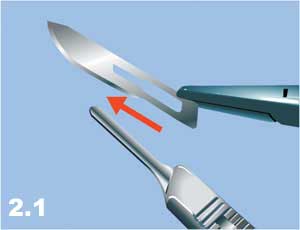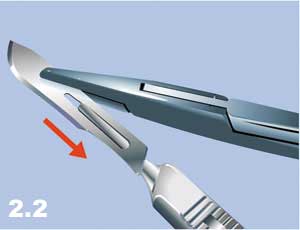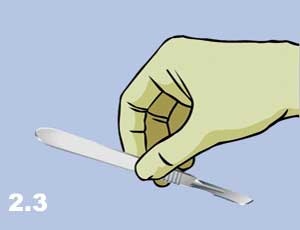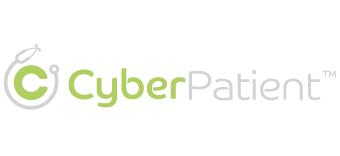Description #
This unit is intended for training of undergraduate, clerkship, and the first year of the core residency program in order to learn the practical aspects and techniques for holding and handling surgical instruments.
Learning Objectives #
At the end of this unit, students should be able:
1) Operating the Scalpel
2) Operating Scissors
3) Operating a Needle Holder
4) Operating Tissue Forceps
5) Operating Clamps
Overview #
The use of surgical instruments for specific tasks may require skills that positively affect the outcome of a surgical procedure.
These skills include holding, handling, and maneuvering surgical instruments in such a way that makes the performance of the surgical procedure safer, easier, smoother, and faster.
It is important to mention that there are no specific rules and regulations for the holding and handling of surgical instruments.
Individual surgeons may develop their own style of operating. Therefore, it is feasible to select specific maneuvers from different operators and form a style that one is most comfortable with.
The specific aim of this chapter is to introduce the most commonly used (classic) methods for holding, handling and maneuvering surgical instruments during operating procedures.
Contents #

Operating the Scalpel
Handling a Scalpel
Holding a Scalpel
Incision Techniques
Operating Scissors
Holding Scissors
Using Scissors
Operating a Needle Holder
Holding Needle Holders
Loading a Needle Holder
Operating Tissue Forceps
Holding Tissue Forceps
Using Tissue Forceps
Operating Clamps
Holding a Surgical Clamp
Using a Surgical Clamp
Operating the Scalpel #
Handling a Scalpel
A scalpel is a sharp instrument and therefore it is important to use extreme caution when handling. In terms of handling sharp objects in the operating room, treat every patient as though they have a blood-borne transmissible disease.
a) Loading. Loading and unloading of the blade must be done with a hemostatic clamp or needle driver by grasping the body of the blade and sliding the blade onto the hub of the handle (Figure 2.1).
b) Unloading. To unload the scalpel, grasp the proximal end of the blade with a hemostatic clamp, push the blade slightly upward to unlock the body of the blade, and separate the blade from the handle by sliding the blade upward (Figure 2.2).


c) Giving. To give the scalpel to another person, the scalpel should be grasped with the sharp edge of the blade downward, the head toward the person who is giving the scalpel and the handle toward the person who is receiving the scalpel (Figure 2.3).
d) Receiving. To receive the scalpel, grasp the handle and move the scalpel down and then toward yourself (Figure 2.4).


NB: A scalpel is a sharp instrument, hence: The scalpel must not be loaded and unloaded manually – use instruments. The scalpel must never be passed to others with the sharp end toward the receiver as it may injure the receiving individual. When receiving the scalpel, do not pull the scalpel as it may cut the fingers of the other person.
Holding a Scalpel
The most important principle to remember when holding a scalpel is to have full control of the instrument and at the same time, to have freedom of movement. There are three common ways to hold a scalpel:
a) The Pencil Grip (Figure 2.5). This grip is used to perform small, precise incisions often with a #15 blade. With this grip, the cutting direction can be changed 360° by moving the hand and wrist (with little upper arm movement).
b) The Fingertip Grip (Figure 2.6). This grip is used to make long, straight, or curved incisions. This technique provides a great deal of maneuverability due to the flexibility of the arm, wrist, and fingers. As a result, it is frequently used in surgery.
c) The Palm Grip (Figure 2.7). This is the strongest grip and used when a precise movement with a great deal of pressure is required. The hand and wrist are kept relatively fixed, and the scalpel is held parallel with the skin to maximize the cutting edge of the blade. This grip has very limited maneuverability.
Incision Techniques #
General Principles:
The most important principles for the use of the scalpel are as follows:
a) planning and measuring before cutting.
b) stabilizing the skin during an incision (Figure 2.8).
c) placing the knife perpendicular to the tissue plane and cutting straight and clean (Figure 2.9).
d) cutting the tissue layer by layer.
e) focusing your attention on the direction of the scalpel when cutting.
Methods:
The most common methods of incision with a scalpel are:
a) Press Cutting (Figure 2.10). The scalpel is pressed into the depth of the tissue with a straight movement, like stabbing.





